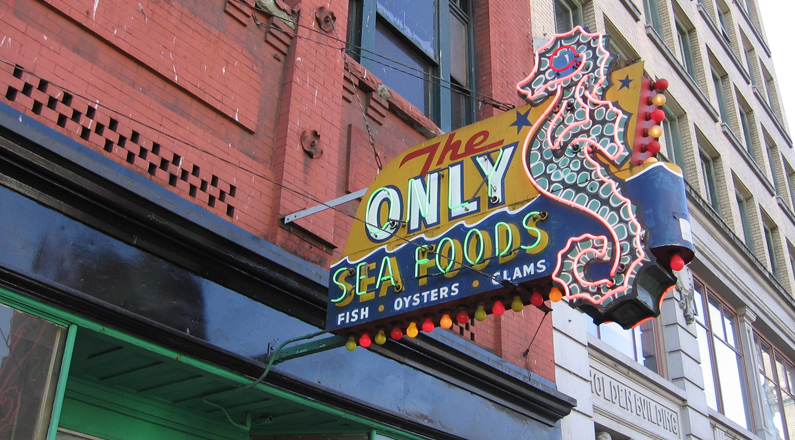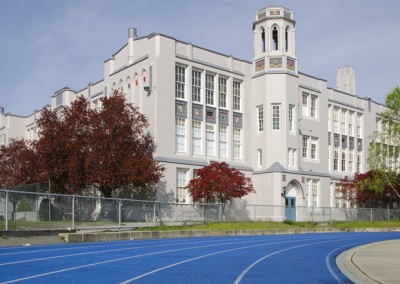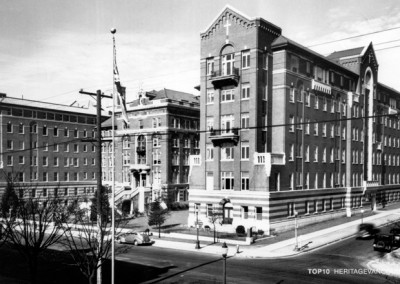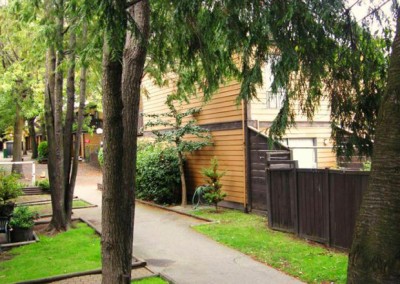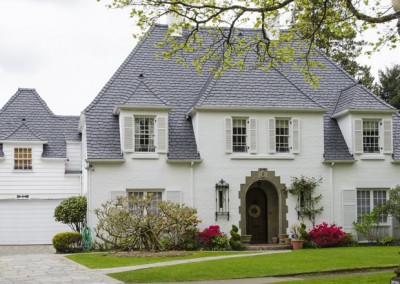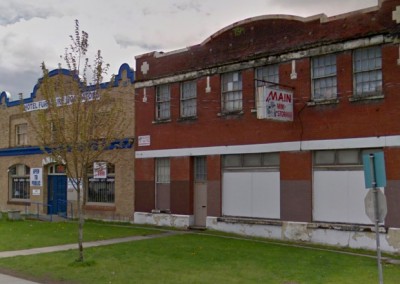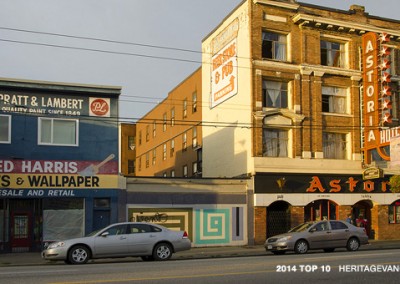In recent years, the Downtown Eastside has weathered ever-increasing pressures for both residential and commercial developments, with mixed results, both socially and architecturally. This pressure affects two of the first four buildings in this block, that together present an undisturbed heritage streetscape that merits preservation.
The buildings are:
- No. 2 East Hastings at the corner of Carrall Street, the 1906 Pennsylvania Hotel;
- No. 6, the 1899 Desrosiers Block;
- Nos. 12-16 – the 1911 Holden Building / Tellier Tower; and
- No. 20-26 – the 1911 Con Jones Building.
Threat
What is the threat to this block of East Hastings Street?
While the recent Downtown Eastside Local Area Plan clearly shows the entire first block of E. Hastings (addresses 1-99) falling within the protected Gastown National Historical Site boundaries, there is no mention of retaining these four structures. The Pennsylvania Hotel and the Holden / Tellier Tower, both of which provide social housing, are both likely protected, since they have been recently renovated in order to provide social housing, however, the two-storey Desrosiers Block and two-storey Con Jones Building are vulnerable despite their heritage designation.
At first glance, the 1899 two-storey Desrosiers Block today does not evoke a heartfelt response from the passerby. Its dilapidated façade has been completely neglected, as evidenced by the potentially dangerous condition of its cornice, and the lack of respect for its other architectural features.
In November 2013, fire actually damaged part of the interior but the owner does not wish to incur any expenditurehas refused to to repair this damageit, suggesting that its . A major fire could have caused significant damage to both its restored neighbours. Its survival, even from the owner’s perspective, is thus tenuous. Beyond the risk posed by fire to itself, a major fire could have caused significant damage to both its restored neighbours.
The 1911 two-storey Con Jones Building east of the Tellier Tower housed Jones’ ‘Don’t Argue’ tobacco store and pool hall into the 1930s. Its second street-level business was the popular Only Fish & Oyster restaurant, a culinary destination for Vancouverites from 1916 to 2009. The Logger’s Social Club on the second floor closed down at about the same time. In 2013, the “Only Seafoods” neon sign was reaffixed to the building as a preliminary step towards the restaurant’s planned reopening by the Portland Hotel Society, but that plan ended when they were forced to sell the building. The new owner provides social housing, which increase the threat of demolition.
The fate of these two low-rise buildings could be the same as the next block to the east, where more than half of the south side of East Hastings fell to the wrecker’s ball, regardless of depriving the city of the block’s the dramatic impact on the streetscape due to the concurrent loss of heritage historic and heritage designated structures.
Significance
Why are these buildings significant?
The first four buildings on the south side of E. Hastings form an homogeneous enclave of heritage buildings built between 1899 and 1911, and are excellent examples of the sawtooth-style of development that early Vancouver streetscapes displayed. This area of E. Hastings St. falls within the Gastown National Historical Site boundaries. Its significant architecture is therefore municipally designated, and should therefore be protected.
The 1906 Pennsylvania Hotel, originally the Woods Hotel, was refurbished a few years ago with 44 units of social housing and ground floor commercial space. It was designed by W.T. Whiteway, the designer of the nearby Woodward’s Store and Sun Tower, and it acts as an anchor for this block. Its Edwardian splendour is accentuated by its “witch’s hat” roof as well as by the restored neon sign that stretches vertically on the front façade. The restoration of the neon sign points contributes to the Downtown East Side’s efforts to (DES) as havingmaintain one of the best remaining assemblages of historic neon in the country, from recalling the decades where Vancouver boasted one neon sign for every nine residents. The reuse of this building as social housing, as well as its beautiful external restoration, will most certainly protect this building from unfriendly interventions.
Two doors eastward is the 10-storey Holden Building, also designed by W.T. Whiteway, in 1911. Its classical bearing matches the white-collar occupants of its original offices. When the City absorbed South Vancouver and Point Grey in 1929, the existing City Hall on Main Street was inadequate, so additional offices were established on the fifth floor in the Holden. It is very possible that plans for the On-to-Ottawa Trek in 1935 may have been at least partly planned in the union offices in the building. When it was refurbished as a cooperative residence for local seniors in 1988, it was renamed the Tellier Tower after one of the leaders of the Trek, French-Canadian Gérald “Jerry” Tellier. Given its social and architectural heritage, the Holden/Tellier Tower should proudly remain with us.
Of less certainty is the future of the two-storey 1899 Desrosiers Block, which is dwarfed between these two previous buildings. It was built by P. Donahue in 1899 for the owner, French-Canadian Magloire “Michael” Desrosiers, a successful tinsmith and cornice-maker. Desrosiers was one of several Francophones active in early Vancouver whose buildings graced the early downtown core. This building still boasts a lovely tin cornice (though in poor condition) bearing its name, framed by two Lilliputian columns. Photos indicate that at least until 1936, the cornice bore yet another crowning section that stated its year of construction – 1899. Its second storey shows solid masonry massing, but most of the details on its main floor have been effaced over successive iterationstime. After its original role as purveyor of stoves, tinware and cornices, the Desrosiers Block housed many successive tenants, of declining quality.
The fourth component of this period streetscape is the Con Jones Building, a two-storey red-brick masonry structure with graceful arched and corbelled windows. Australian-born architect H.A. Hodgson designed this as well as many fine residences and institutional buildings. The façade is quite sedate, but the building became famous for the outlandish neon signage touting Jones’ tobacco store, blinking “Don’t Argue!” to all passersby, followed in his advertisements by his slogan “Con Jones sells fresh tobacco”. This was in fact Vancouver’s very first neon sign, which launched Vancouver on its way to being a mecca for neon signage in North America. Originally from Australia, Jones was also instrumental in bringing professional baseball, lacrosse and soccer to the city to play in Con Jones Park, that he built in 1911, on Renfrew Street across from the PNE.
Another iconic business that operated in this building was the Only Fish & Oyster, which closed in 2009, having earned the title of Vancouver’s oldest running family-owned restaurant, as well as Vancouver’s longest surviving restaurant in the same location. The built-in period counters are still extant, among many interior features, and would provide the perfect site for a refurbished restaurant. On the upper floor of the building, the Brunswick Pool Hall eventually became the Broadway Social Club, and more recently, the Logger’s Social Club, all with ties with to the industrial history of this area, when the port and railroad workers walked up the hill for their tobacco, clam chowder and a game of pool.
Position
Heritage Vancouver’s position
We believe that the heritage enclave of four buildings on the south side of the first block of East Hastings Street should be preserved as representative of the settlement and building boom prior to the First World War, and as examples of historical businesses and office buildings linked to the City’s administrative development and to several iconic establishments of the turn of the twentieth century.
We strongly encourage the City of Vancouver to:
- Preserve the streetscape of 2-16 East Hastings as a heritage enclave, using the Heritage designations as a protective measure.
- Encourage the restoration, possibly with compatible additions, of the two smaller structures, the Con Jones Building and the Desrosiers Block, and reintegrate them into the commercial fabric of this streetscape.
- Encourage the positioning of new businesses on the main floors of all four of these buildings, to ascertain the viability of the whole, and to produce an inviting commercial enclave, espousing the City’s desire to create new neighbourhood retail centres in the DES.
- Facilitate the reappearance of the Only restaurant, which would bring an immediate clientele back to this block, who could then patronize the other new businesses.
- Work with the owner of the Desrosiers Block towards the proper maintenance of this building, in order to protect its neighbours from potential collateral damage.
Actions
What you can do
Let the City know what you like about this section of Hastings and what buildings and other elements of the street you would like to see retained and refurbished.
